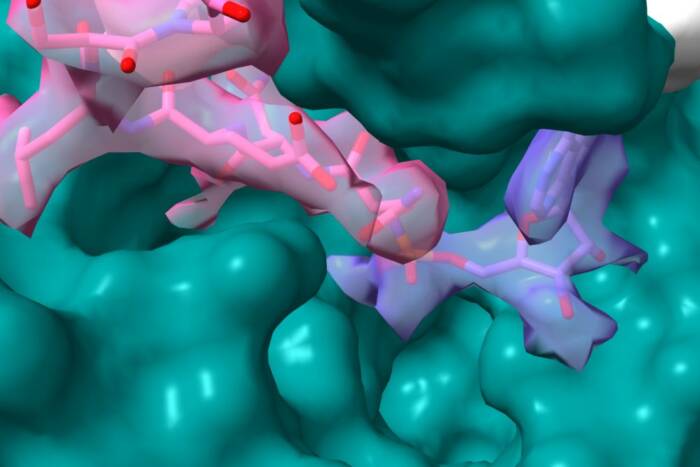Newly discovered class of small RNAs is specifically to reproductive cells
One size does not fit all when it comes to RNA. And now, in addition to long mRNA strands that deliver genetic instructions, and microRNAs (miRNAs) that serve to tweak those instructions and are implicated in everything from insulin production to cancer, scientists have discovered a new player among the RNA cast that are specifically linked to sperm. Called piRNAs, and discovered by Thomas Tuschl’s lab at Rockefeller University, these new small RNA strands are believed to play a major role in the development of the cells that pass genetic information from father to offspring.
Like miRNAs, which are 21 to 23 nucleotides in length, piRNAs might exist as a means of destabilizing unwanted messages. MiRNAs bind to a class of proteins called Argonaute proteins, find a complimentary messenger RNA, and then target that RNA for destruction, thereby regulating the production of proteins associated with that RNA. A subclass of Argonaute proteins, called Piwi proteins, is only found in the germ cells of mice and humans. Tuschl’s lab was interested in understanding if miRNAs would bind to Piwi proteins as well. They didn’t. But what they found instead was a new type of small RNA, 26 to 31 nucleotides long, whose production, assembly and action are completely different than that of miRNAs.
“Piwi proteins are only expressed in the germ cells in testes and ovaries,” says Tuschl. “When these proteins are removed from mice, the males are infertile, and the germ cells all die before they produce sperm. We looked at these proteins, expecting them to bind to miRNAs like the other Argonaute proteins, but we found a new class of small RNAs, which we named piRNAs, for Piwi-interacting RNAs.”
Closer analysis suggested there are several key differences between piRNAs and the miRNAs that they resemble. The piRNAs are made from long, single-stranded primary transcripts, in contrast to miRNAs, which are processed from double-stranded RNA. This suggested to Tuschl that piRNAs require completely different proteins for their production, proteins that haven’t yet been identified.
In addition, the sequences of the piRNA transcripts are not conserved from mice to humans, but their regulatory elements and their location on the chromosomes are. The sequences of their transcripts appear so random, that nearly the entire genome could be among their predicted targets. To Tuschl, this suggests that piRNA production might function as a checkpoint during meiosis, helping the cells switch their entire transcriptional program, or by acting at a basic mRNA or metabolic level globally affecting mRNA localization and translation.
“The transcripts and their processing machinery are specifically expressed only in this one cell type,” says Tuschl, “possibly because only germline cells undergo such massive morphogenetic events.”
Nature 443(203): 203-207 (July 13, 2006)(opens in new window)


